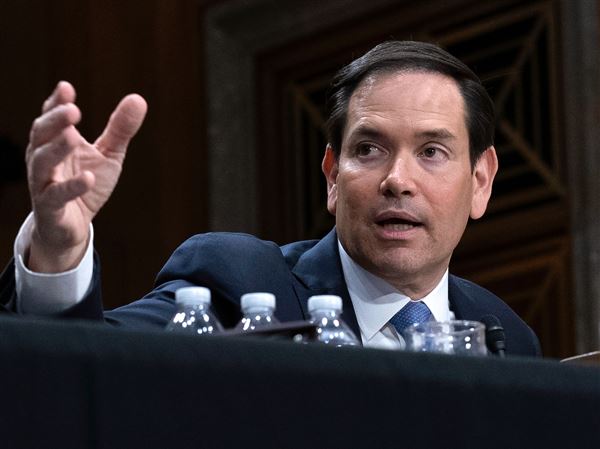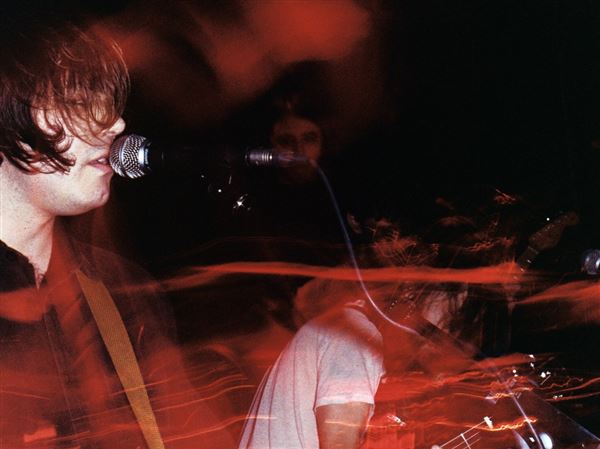
Apple Computer CEO Steve Jobs unveiled desktop and notebook computers based on Intel microprocessors -- the same CPUs that power computers that run the Microsoft Windows operating system.
Click photo for larger image.
 Microsoft, Apple sign five-year pact on Office software for Macs
Microsoft, Apple sign five-year pact on Office software for MacsSAN FRANCISCO -- Apple Computer Inc. on Tuesday unleashed its strongest weapons yet to chip away at Microsoft Corp.'s dominance of the PC market.
In unveiling computers and laptops with Intel Corp.'s microprocessors, Apple is tapping not only the latest chip technologies that rival makers of Windows-based PCs will use but also the vast marketing power that Intel, the world's largest semiconductor company, delivers.
With the success of its iPod players and flashy retail stores, Apple has already begun stealing customers from the Windows camp. After years of hovering around 3 percent, Apple last year cracked 4 percent of the U.S. PC market.
The move to Intel chips will only boost Apple's sales and will instantly erase the perception that Macintosh computers lag behind Windows-based PCs in performance, analysts say.
"Now consumers can buy a Mac that is three times faster and for the same price," said Nathan Brookwood, analyst with Insight 64 research firm.
Apple's historic shift to Intel microprocessors came months earlier than expected as CEO Steve Jobs debuted an iMac desktop and a notebook based on the chip makers' new two-brained processor, the Intel Core Duo.
When it first announced plans to switch in June, Apple said it expected to begin making the transition by mid-2006. On Tuesday, Mr. Jobs was joined at the Macworld Expo by Intel CEO Paul Otellini to unveil the new jointly designed computers.
Mr. Jobs said its entire Mac line will be converted to Intel by the end of this calendar year.
"Companies don't typically under promise and over deliver, and that's exactly what Apple has done," Sam Bhavnani, analyst with Current Analysis, said of the early launch.
The shift comes as Apple's hugely popular iPods continue to enthrall the public. Apple brought in a record $5.7 billion in sales during the holiday quarter as it sold 14 million iPods, said Jobs. That's nearly three times as many units as it did in the same period a year ago.
But Tuesday's focus was on computers.
For years, Apple shunned Intel, which has provided chips that power a majority of the world's PCs, along with Microsoft's Windows software. In the late 1990s, Apple even ran TV ads with a Pentium II glued to a snail.
But Apple became increasingly frustrated in recent years as its chip suppliers, IBM Corp. and Motorola Corp.'s spinoff, Freescale Semiconductor Inc., failed to meet its needs for faster more energy efficient chips.
Of particular concern was IBM's apparent inability to develop a G5 chip that would work well in notebook computers.
Intel, on the other hand, has been focusing on developing chips specifically tailored for notebooks. During last week's International Consumer Electronics Show, Intel unveiled its latest, the Core Duo, which features two computing engines on a single piece of silicon. It was that chip that Apple decided to fit into the new iMacs and MacBooks.
Though the change to Intel has occurred faster than expected, it still poses some risks.
Besides potentially alienating a fan base that's accustomed to doing things differently, Apple's move opens up the issue of backward compatibility and the possibility that PC users might run pirated versions of Mac OS X, Apple's critically acclaimed operating system, on their generally cheaper non-Apple computers.
Mr. Jobs demonstrated new software, called Rosetta, that will let owners of the new Intel-based Macs run older applications. But he did not comment on how the company will lock its operating system to its hardware.
With Intel processors inside the new Macs, their owners could choose to run Microsoft Windows and software designed for it at full speed.
Though Windows sales could benefit, Microsoft risks losing ground unless its operating systems keep up with the Mac OS X. Windows Vista, the next major update, won't be available until later this year -- and its promised features copy many of those already in Mac OS X.
The change does not appear to have alienated Microsoft, however, which offers a Mac version of its popular Office productivity suite.
"We're formalizing our commitment to this platform," said Roz Ho, general manager of the Microsoft's Macintosh Business Unit. "We'll continue shipping Office (for the) Mac for a minimum of five years."
The new iMacs will have the same all-in-one design as previous models and will be available with 17-inch and 20-inch screens for $1,299 and $1,699. Jobs claimed the new models are two to three times faster than the iMac G5, based on an IBM chip.
The MacBook Pros -- with 15.4-inch displays -- start at $1,999. Jobs touted it as the thinnest and fastest operating laptop in Apple's portfolio.
All the new computers will include Apple's Front Row software and a remote control, which lets users watch videos, listen to music or browse photos from across a room.
The machines also will be bundled with Apple's newly announced iLife '06 suite of digital lifestyle programs. In one of the updates, the latest version of iPhoto will let Mac shutterbugs share pictures much like bloggers, and podcasters share content.
"This is podcasting for photos," Mr. Jobs said.
With a few clicks, users can post an online feed to which others -- including Windows users -- can subscribe. As changes are made to the album, subscribers automatically receive the updates.
The iLife suite also will enable the one-click export of video to iPods as well as a simple, drag-and-drop method of creating DVDs. The program also will support third-party DVD burners.
First Published: January 11, 2006, 5:00 a.m.















